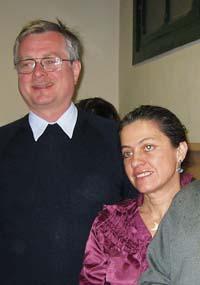Ancestral hervidas ancestrales
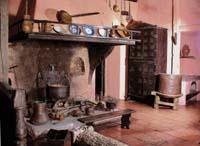
The grandmother knows the plants that surround her, knows them by name and knows what they used them for in her day, some still use them. And that is why the ethnobotanist wants to know this knowledge, collect and retain testimony of that knowledge. And it is that grandmother owns the knowledge of her ancestors, she received it from her parents and grandparents, and unfortunately her children have received no more than part of that knowledge, and her grandchildren even less.
Moving away from wildlife
In general, this phenomenon is occurring throughout the world, from generation to generation the knowledge of their ancestors is being lost. Part of this knowledge is that of older people, especially women. And, to the extent possible, ethnobotany tries to ensure that this knowledge is not lost.

Thanks to this, about eighty thousand species of plants that have traditionally been eaten or consumed are known, and about one hundred thousand species that have been used as medicines.
For a long time, ethnobotanical works have been carried out. The oldest known is De Materia Medica, written in the year 77 by the Greek Dioscorides. This work is a kind of catalogue: It collects six hundred plant species of the Mediterranean, with its use and preparation recipe.
But the term ethnobotany itself is not so ancient, it was first used in 1895 by the botanist Harshberger to differentiate a discipline that combines anthropology and botany. According to Harshberger, ethnobotany is "an investigation of the plants used by the Aborigines and takes care of their importance in the culture and performance that civilization can obtain from their use."
Over time, discipline has evolved and has been adapting its definition. Thus, at present, ethnobotany investigates the relationship of man with plants. This relationship is very broad, since the plants have multiple uses: as food, as medicine or fuel, in the construction, in the making of clothes, rituals... In addition, it has different perspectives: cultural, gastronomic, pharmacological, historical, toxicological, etc.
Medicinal plants to the pharmacy
Formerly the only resource to feed and heal was the vegetation of the area. They knew perfectly the local vasalandarras. But in the last 50 years the situation has changed a lot: men and women have moved away from wildlife, society has been urbanized.

But not everything has been lost. It must be recognized that many current medications have been used since ancient times. Morphine, for example. Morphine is an active substance of the opial herb (Papaver somniferum), which has been used since antiquity as analgesic. Older mentions to. C. C. III. They are dependent, so they would use it long before. Morphine was first removed from opium in 1803 and has since been included in the list of medicines from hospitals around the world. It is currently used to relieve the most severe pain.
Another type of drugs, such as ephedrine and taxol, have made a similar path. Ephedrine Ephedra vulgaris is an active substance in the plant that increases respiratory capacity. Taxol leaves the vagina and is used in the treatment against cancer. These and other drugs are, say, modern drugs born from the historical-cultural heritage.
Still today, exploring the cultural heritage of the villages is a good way to look for new medicines. Yes, it requires a lot of work. In the European Union, for example, V was a project. Within the framework of the framework program, research the ethnobotanical heritage of several villages. The project was led by Michael Heinrich, senior researcher at the London School of Pharmacy. Heinrich was in San Sebastian at the end of January at the ethnobotanical days of Aranzadi. And he announced this project and, in passing, explained the work of the ethnobotanists.
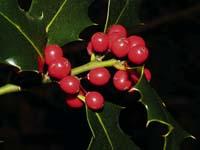
For example, how do you know if the use of a plant is new or old? Well, in these cases anthropology and linguistics have something to say. For example, this project analyzed the ethnobotany of an Italian people of Greek origin, among others. Among other things, medicinal and edible plants that were traditionally used were identified; and to know (even if approximate) the tradition of their use, the names that the people gave to the plants with which they were given in several Greek villages were compared. Some coincided. Conclusion: these plants were used for a long time, at least, since that village was part of Greece.
In addition to historical research, the project included pharmacological and toxicological research. For example, we analyzed a snack flower (Merendera montana) food in many places of the Iberian peninsula. Bulbs of this plant are consumed. It was observed that the consumed dose is at the limit of toxicity.
From the pharmacological point of view, thyme (Thymus vulgaris) was also investigated. The active substance of thyme is thymol, known for a long time. During the research, it was discovered that the variety of thyme with less thymol is the most effective as a drug, so the thyme contains more active substances than thymol.
Now in Euskal Herria
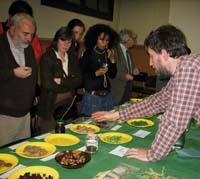
Well, similar research is being done in Euskal Herria. An ethnobotanist from Heinrich's team, Rocío Alarco, will go to investigate the traditions of southern Alava. He will visit the area of Izki, conducting interviews with his people, taking samples of plants, conducting pharmacological and toxicological analyses, etc.
Data collection has already been carried out in Euskal Herria: Daniel Pérez de Aranzadi has conducted hundreds of interviews and continues to do so. In fact, Pérez organized a day of ethnobotany in which he exposed the heritage of Euskal Herria. From the data collected and with the intuition that has given him the experience, Pérez divides the ethnobotanical heritage of Euskal Herria into about six traditional cultures.
These cultures or traditions are distributed geographically: the culture of verbena and passion grass in Gipuzkoa in general, that of beech in the midwest of Bizkaia, that of Izkikoa (to the south of Álava), that of the rocks in the center of Navarre, that of the Pyrenees and that of the riverside (to the south of Navarre).

Of course, the distinction between these cultures is not rigorous. The most similar are those of similar ecology, since they are the natural resources within their reach. In addition, due to their relationship, they interact with each other and, to a greater or lesser extent, they are influenced by other cultures of the environment, such as the Mediterranean and the Cantabrian.
Among them, highlighted Izkikoa Daniel Pérez. And it is that, although apparently the tea culture of the rocks appears, it has its own characteristics. They say that those in the area of Izki took much advantage of the forest (in which there are trees of many species of the genus Quercus), ate in the forest and the cooked acorns, used as medicine the touch of the txantxapot or the navel of Venus (Umbilicus rupestris) and had a special way of making txondorras.
Space for reflection
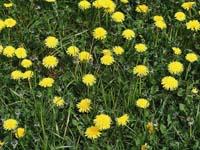
In the words of Pardo de Santayana, this research can be an economic benefit, with the development of new drugs or the commercialization of some traditional food. But, in addition, society will certainly benefit from another type: strengthening the intergenerational relationship and taking into account local culture and traditions.
Thus, "conservation of nature, sustainable exploitation and cultural heritage will come together."
